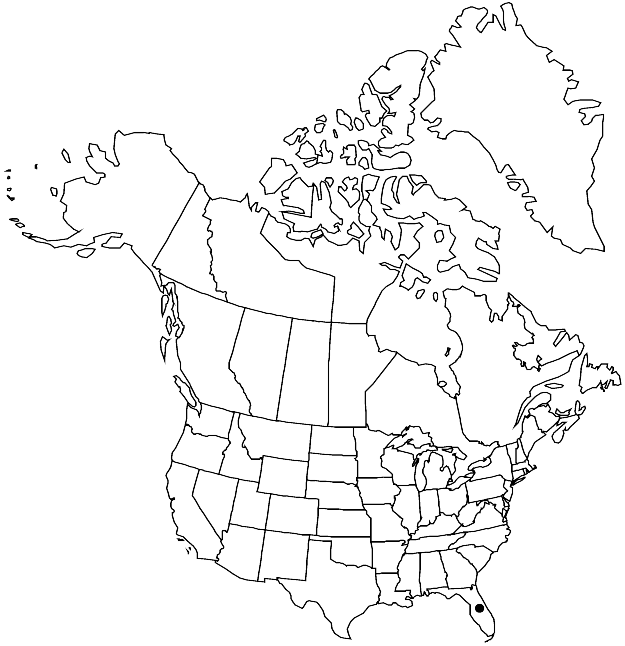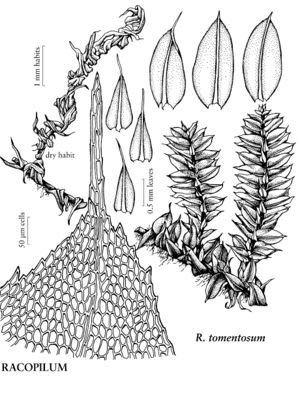Racopilum tomentosum
Bryol. Univ. 2: 719. 1827.
Lateral leaves slightly asymmetric, 1.5–2 × 0.8 mm; margins coarsely serrate distally; costa long-excurrent; medial laminal cells 13–16 µm. Dorsal leaves narrowly triangular-acuminate, 1 × 0.5 mm; costa long-excurrent; medial laminal cells 10–15 µm. Seta brown, 1.4–2.7 cm. Capsule brown, 3–4 mm; operculum obliquely rostrate, 2.5 mm. Calyptra tardily cucullate, 2.5–3 mm. Spores 13–15 µm.
Phenology: Capsules mature late Jan.
Habitat: Limestone, base of trees, rotted wood, humus, low and humid forests
Elevation: low elevations (0-50 m)
Distribution

Fla., Mexico, West Indies, Central America, South America.
Discussion
Racopilum tomentosum is unmistakable due to the creeping stems, which are heavily tomentose ventrally in older portions, and the dimorphic leaves twisted-contorted when dry and spreading-erect in 4 rows when moist. Some of the Florida specimens have gametoecia (for example, Philips 97), but only a single collection with sporophytes is known from the flora area (Collier Co., Anderson & Crum 13440, Mosses of North America 595, DUKE, FLAS, LAF). Some duplicates of this issue may lack sporophytes.
Selected References
None.
